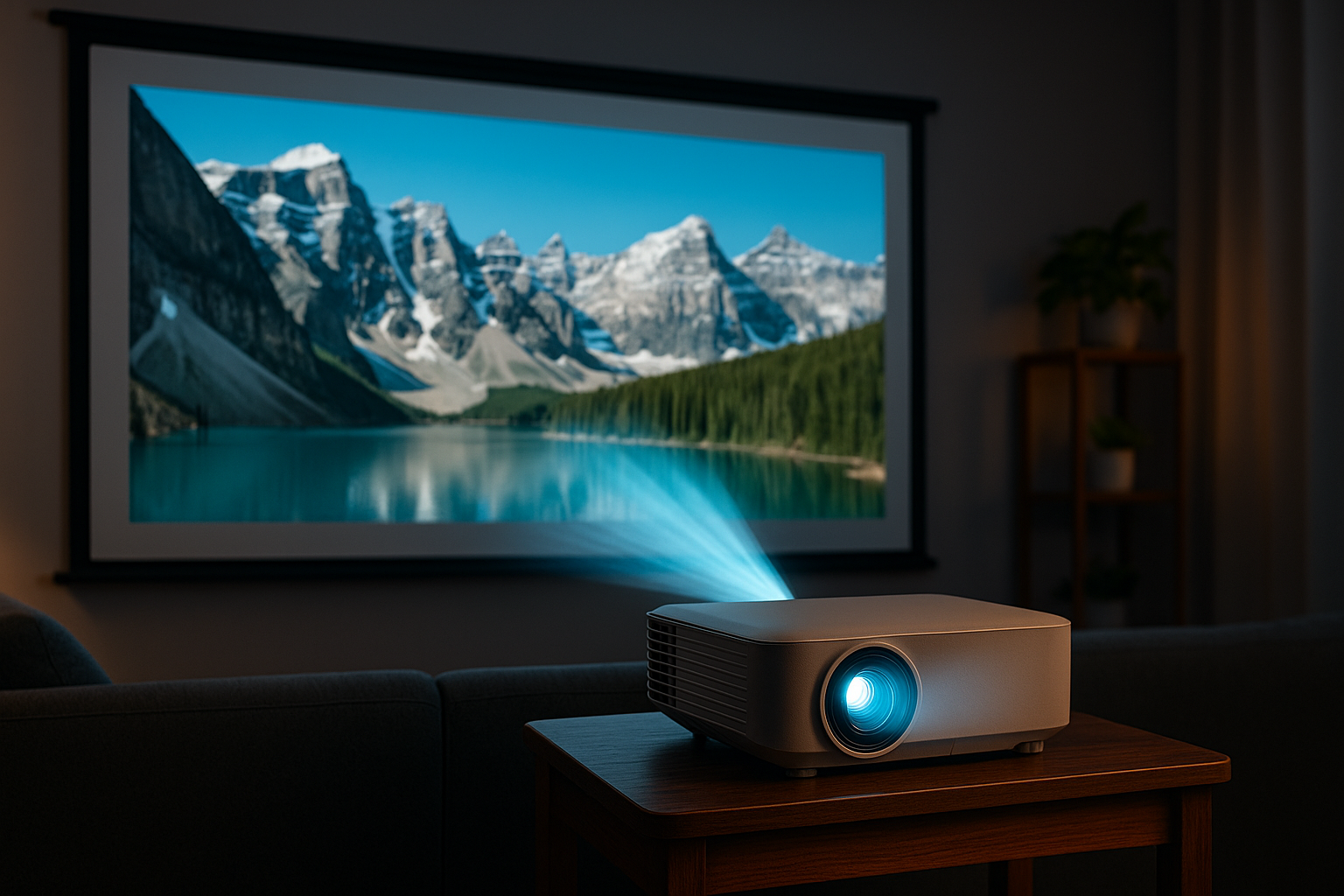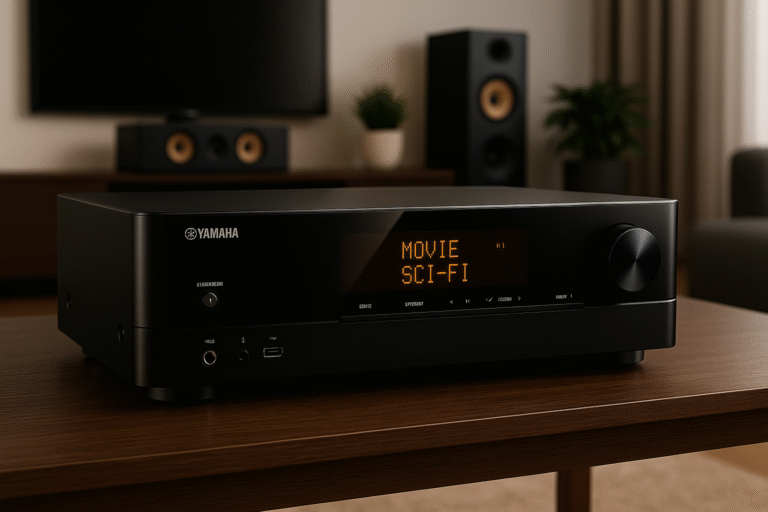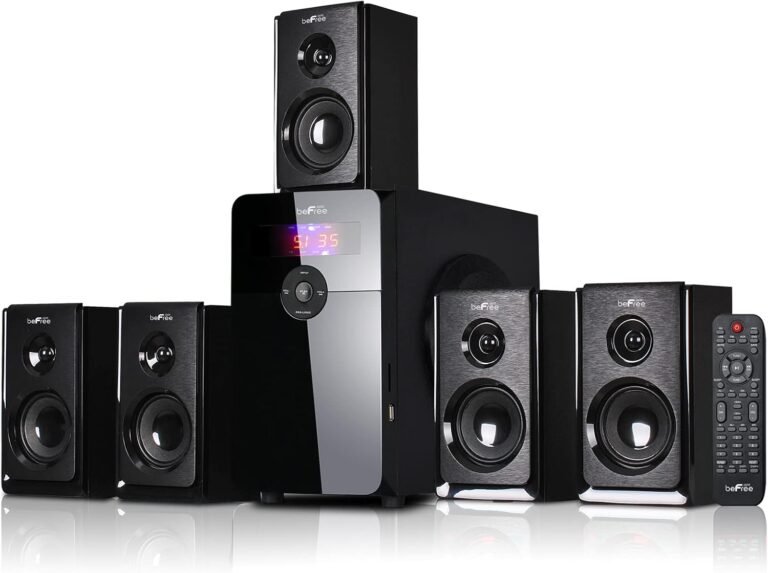Used Projectors for Home Theater: Why They Outclass the Latest TVs
In a world flooded with terms like “8K,” “OLED,” and “Mini-LED,” many buyers wonder: does it still make sense to choose a projector for your home theater?
The answer is not just yes — it’s one of the smartest decisions you can make if you’re aiming for a truly immersive cinematic experience.
And thanks to the growing used market on Amazon, you can now access professional-grade projectors at a fraction of their original price. But before you buy, let’s explore why a well-chosen used projector can outperform even the latest televisions — and how to buy one safely.
Why Choose a Used Projector Over a 4K or 8K TV?
🖼️ 1. Screen Size TVs Can’t Compete With
An 85-inch TV can cost you over $2,000 — and it’s still not “giant” in home cinema terms. A used projector can give you a 120- or 150-inch image effortlessly. That scale dominates your peripheral vision, delivering immersion no flat screen can match.
👁️ 2. More Natural Light and Less Eye Fatigue
TVs emit light directly into your eyes. Projectors reflect light onto a surface, resulting in a softer, cinema-like image. It’s also less tiring on the eyes, especially during long movie or gaming sessions.
🔍 3. 4K Makes More Sense in Projectors
With most 8K TVs under 75 inches, you can’t see the difference in pixel density from a normal viewing distance. But with a 120″ projected image, 4K resolution actually shines, delivering visible sharpness and detail.
💥 4. Durability and Safety in the Home
TVs are fragile, especially in homes with children or pets. One bump and the screen could be ruined. Projectors, by contrast, can be mounted safely out of reach. Most wear and tear involves the lamp — a replaceable part.
📘 What You Must Understand Before Buying a Projector
📏 Resolution: What It Means and Why It Matters
Resolution refers to the number of pixels a projector can display. More pixels mean more detail, especially on large screens.
- Full HD (1080p): Delivers 1920×1080 pixels. Ideal for screens up to 100–120 inches. It’s the minimum you should accept for true cinematic experience.
- 4K (UHD, 3840×2160): Offers four times the detail of Full HD. Perfect for very large screens (120–150 inches). Textures, skin tones, and backgrounds look lifelike and precise.
- Pixel Shifting: A technique where a lower-resolution chip rapidly shifts pixels to simulate 4K. While not truly native, it’s visually very close — and far cheaper.
💡 Brightness: Understanding ANSI Lumens
When evaluating a projector, brightness is one of the most misunderstood specs. What really matters is the measurement in ANSI lumens — the only internationally standardized way to compare how bright a projector really is.
Always verify the brightness using ANSI lumens only.
🔅 Under 2000 ANSI Lumens
Only usable in completely dark rooms. Great for dedicated home cinema rooms with blackout curtains, but not practical for general use.
💡 2000–3000 ANSI Lumens
Balanced choice for most living rooms. Works well with some ambient light. Ideal for users who watch movies in the evening with partial control over lighting.
🔆 Over 3000 ANSI Lumens
Recommended for larger screens (120\”+), rooms with daylight exposure, or for projecting even when the lights are on.
🔧 Tip: The higher the brightness, the more flexible the projector placement. But extremely high brightness in dark rooms can reduce contrast.
🌗 Contrast Ratio: What It Really Does
Contrast ratio is the difference between the darkest black and the brightest white your projector can show.
A higher ratio means:
- More realistic shadows and highlights
- Better color separation
- Depth that “pops” off the wall
Look for projectors with 10,000:1 or higher for serious movie watching.
🧪 Projection Technologies: Pros and Cons
There are three main types of projection systems:
- DLP (Digital Light Processing): Sharp, vibrant, great for fast motion. Used in many cinema theaters. Some viewers may notice a faint “rainbow effect.”
- LCD (Liquid Crystal Display): Brighter whites, solid colors, no rainbow. Great for presentations and general home use.
- LCoS (Liquid Crystal on Silicon): Combines the best of DLP and LCD. High contrast, deep blacks, and ultra-fine detail — often seen in premium Sony and JVC models.
🧠 Verdict: For cinema lovers, DLP and LCoS offer the most immersive visuals. LCD remains an excellent budget-friendly choice.
🔦 Light Source: Longevity and Maintenance
Projectors generate light using three main types of sources:
- Lamps (UHP, metal halide): Common in older models. Lifespan ~2,000–5,000 hours. Needs replacement eventually but cheap on the used market.
- LED: Lower brightness but lasts 20,000+ hours. Very low heat and energy use.
- Laser: Bright, crisp, ultra-durable. Up to 30,000 hours of life. Instant on/off. Rare and valuable if found used.
💡 Tip: If you find a used projector with LED or Laser and working condition, grab it — it’s a high-end bargain.
Connectivity and Smart Features That Actually Matter
- HDMI 2.0 or higher: Needed for 4K streaming or gaming.
- USB-A & USB-C: For media playback or powering external devices.
- Bluetooth/Wi-Fi: Ideal for smart projectors (Android TV, Netflix, etc.) or pairing wireless speakers.
- Audio Out (3.5mm or optical): Essential if not using a receiver.
- Lens Shift: Allows fine-tuned image placement without distortion.
- Keystone Correction: Fixes image angles, but should be used sparingly to avoid image quality loss.
- Optical Zoom: Gives installation flexibility — position the projector farther or closer.
Best Used Projector Brands for Home Theater
📽️ Best Used Projector Brands for Home Theater
| Brand | Highlights |
|---|---|
| Epson | Color-rich LCD, very reliable |
| Optoma | Sharp DLP, high contrast |
| BenQ | Great value, gaming-ready models |
| Sony | Premium LCoS quality if available used |
| LG CineBeam | Compact, often LED/Laser with smart features |
Explore Amazon listings by region
As an Amazon Associate, I earn from qualifying purchases. Your support helps keep this site running.
Final Thoughts: Cinema at Home Without Breaking the Bank
Used projectors allow you to experience cinema-quality entertainment without paying premium TV prices. They’re flexible, durable, and deliver an image far beyond what any similarly priced television can offer.
If you’re building a serious home theater or just want to transform movie night, a used projector is the smart, strategic, and high-impact choice.


